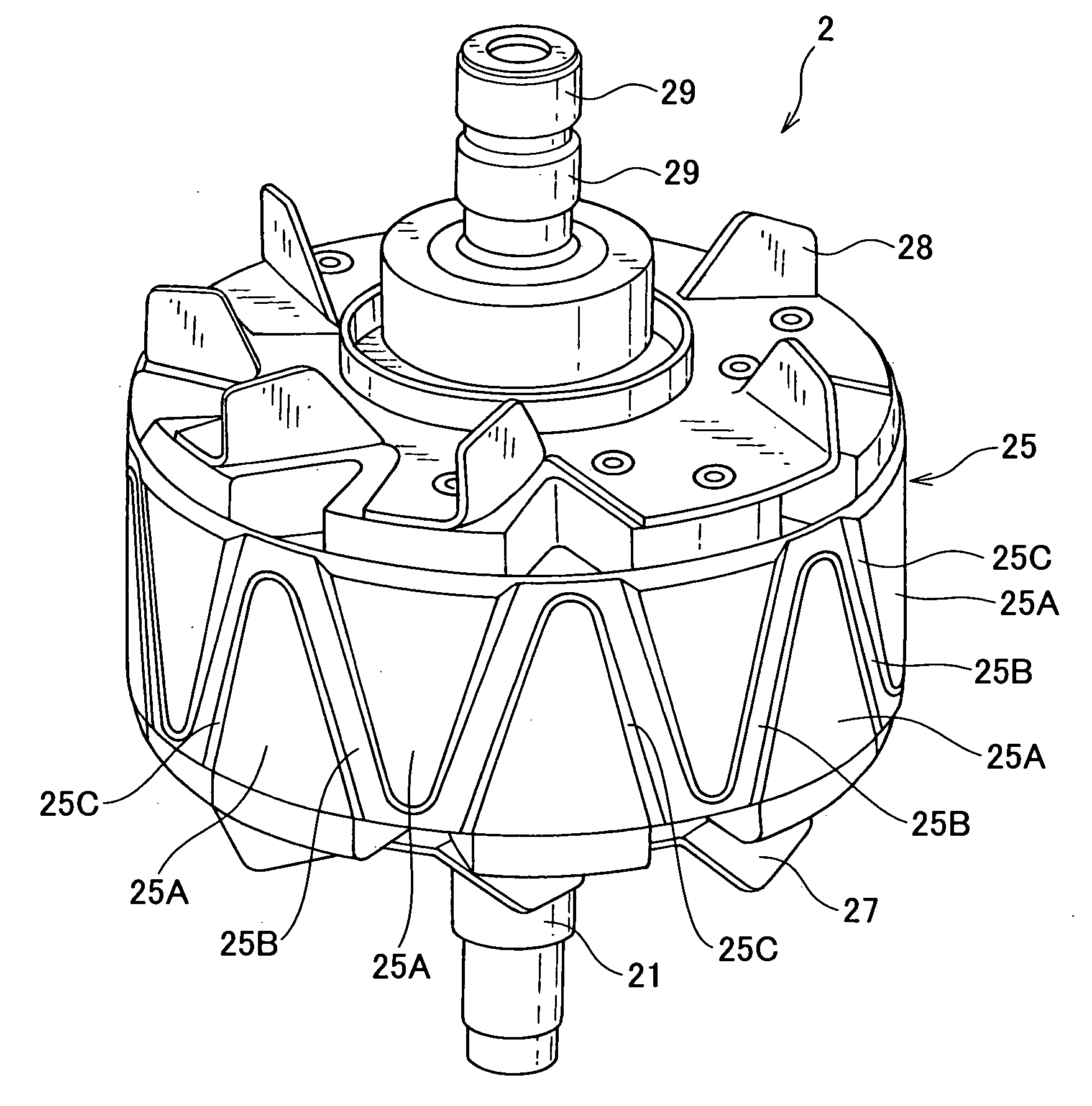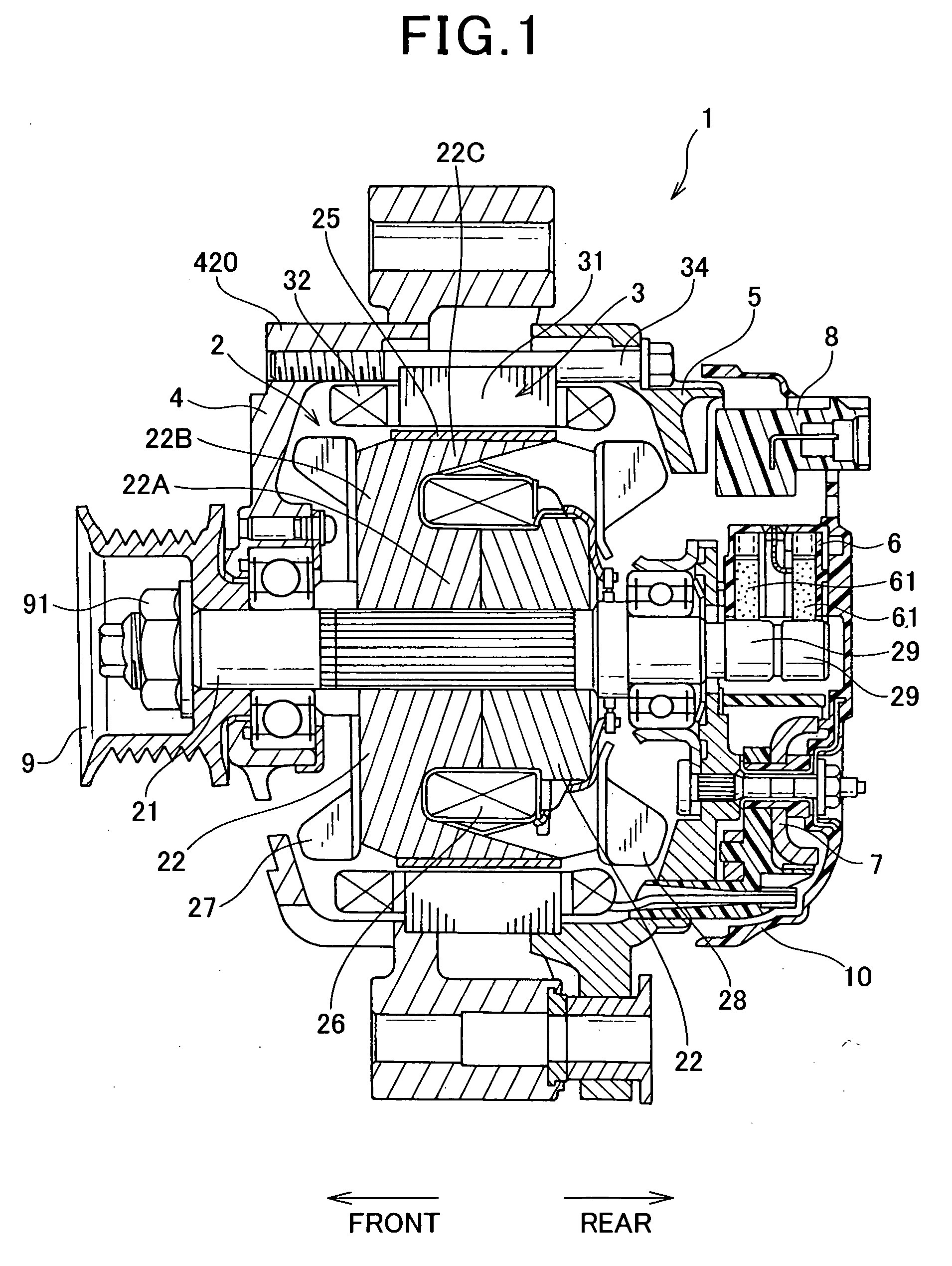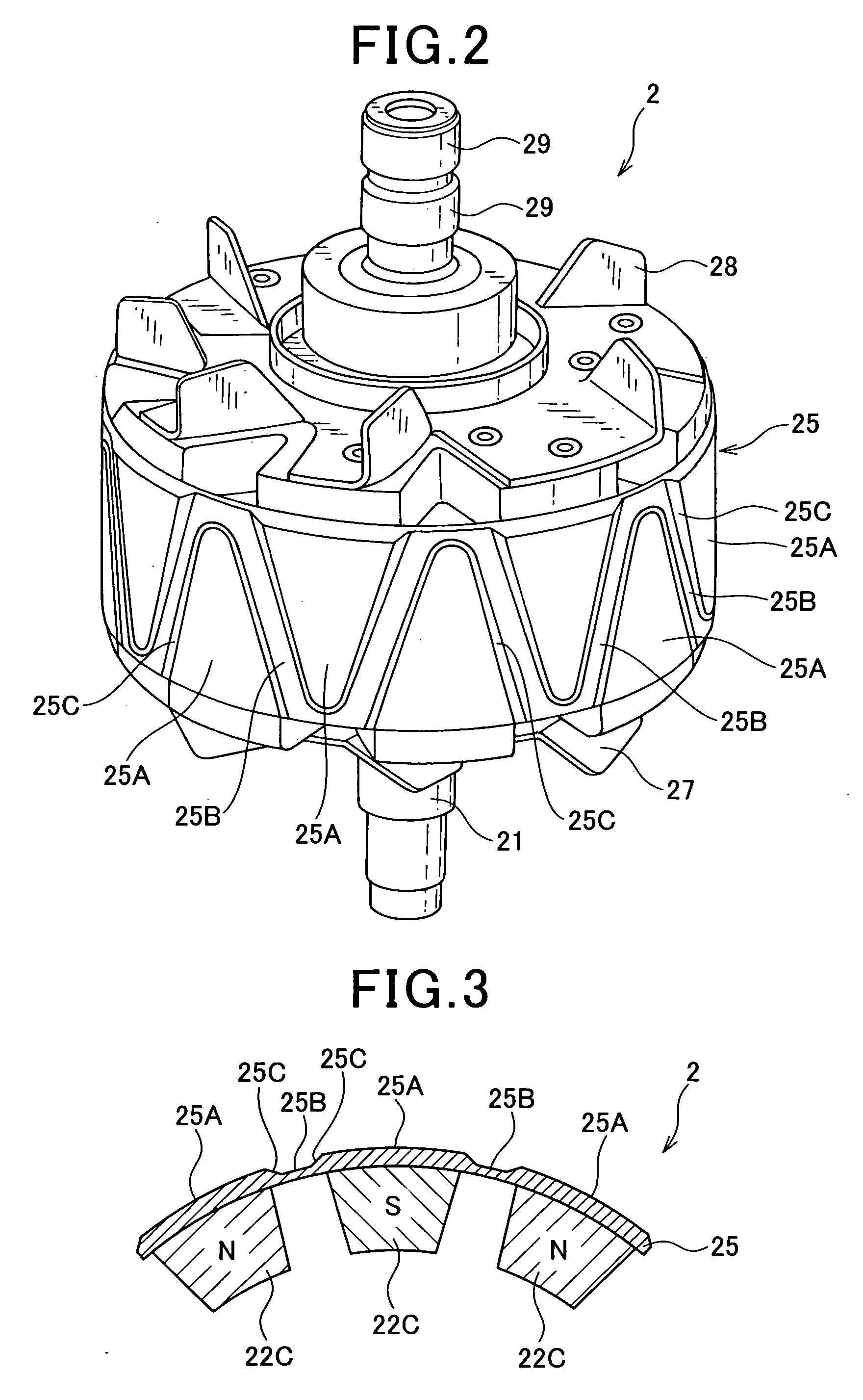Automotive alternator including annular core having protrusions and recesses alternately formed on its outer surface
a technology of alternators and annular cores, which is applied in the direction of rotating magnets, synchronous machines with stationary armatures, magnetic circuit rotating parts, etc., can solve the problems of large windage loss, large magnetoresistance between, and affect the quietness of the alternator, so as to reduce the leakage of magnetic flux
- Summary
- Abstract
- Description
- Claims
- Application Information
AI Technical Summary
Benefits of technology
Problems solved by technology
Method used
Image
Examples
first embodiment
[0028]FIG. 1 shows the overall configuration of an automotive alternator 1 according to the first embodiment of the invention. The alternator 1 is designed for use in a motor vehicle, such as a passenger car or a truck.
[0029]As shown in FIG. 1, the alternator 1 includes a rotor 2, a stator 3, a front housing 4, a rear housing 5, a brush assembly 6, a rectifier 7, a voltage regulator 8, a pulley 9, and a rear cover 10.
[0030]The rotor 2 includes a rotary shaft 21, a pair of first and second lundell-type magnetic pole cores 22, an annular core 25, a field winding 26, and cooling fans 27 and 28.
[0031]The rotary shaft 21 is rotatably supported by the front and rear housings 4 and 5. On a rear end portion of the rotary shaft 21, there is provided a pair of slip rings 29 that are electrically connected to opposite ends of the field winding 26, respectively.
[0032]Each of the first and second magnetic pole cores 22 has a hollow cylindrical boss portion 22A, a disc portion 22B, and a pluralit...
second embodiment
[0065]FIG. 4 shows a rotor 2A according to the second embodiment of the invention.
[0066]As shown in FIG. 4, the rotor 2A includes, instead of the annular core 25 of the first embodiment, an annular core 125.
[0067]The annular core 125 is made of a laminate that is formed by laminating a plurality of soft magnetic lamination sheets in the axial direction of the annular core 125 (i.e., in the axial direction of the rotary shaft 21).
[0068]With the above formation of the annular core 125, it is possible to reduce eddy current induced in the annular core 125, thereby improving the efficiency of the alternator 1.
third embodiment
[0069]FIG. 5 shows part of an annular core 225 according to the third embodiment of the invention.
[0070]As shown in FIG. 5, the annular core 225 has, for each of the recesses 25B, two through-holes 25D that penetrate a wall portion of the annular core 225, which defines the bottom of the recess 25B, in the axial direction of the annular core 225 (i.e., in the axial direction of the rotary shaft 21).
[0071]With the through-holes 25D, it is possible to further effectively reduce the leakage magnetic flux flowing inside the annular core 225 in the circumferential direction of the rotary shaft 21, thereby further increasing the output power of the alternator 1.
[0072]In addition, it should be noted that the annular core 225 may have a different number of the through-holes 25D for each of the recesses 25B, for example one or three.
PUM
 Login to View More
Login to View More Abstract
Description
Claims
Application Information
 Login to View More
Login to View More - R&D
- Intellectual Property
- Life Sciences
- Materials
- Tech Scout
- Unparalleled Data Quality
- Higher Quality Content
- 60% Fewer Hallucinations
Browse by: Latest US Patents, China's latest patents, Technical Efficacy Thesaurus, Application Domain, Technology Topic, Popular Technical Reports.
© 2025 PatSnap. All rights reserved.Legal|Privacy policy|Modern Slavery Act Transparency Statement|Sitemap|About US| Contact US: help@patsnap.com



